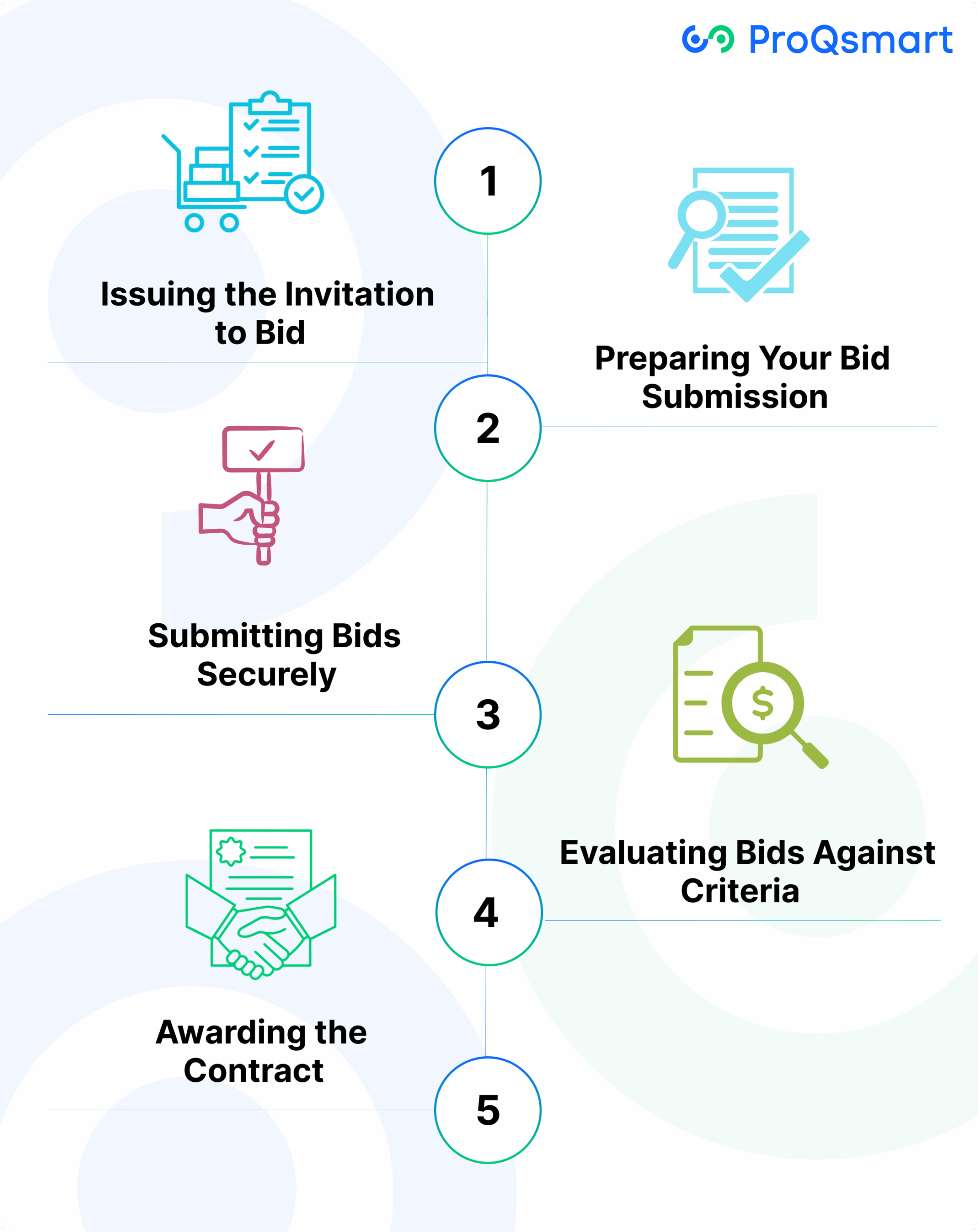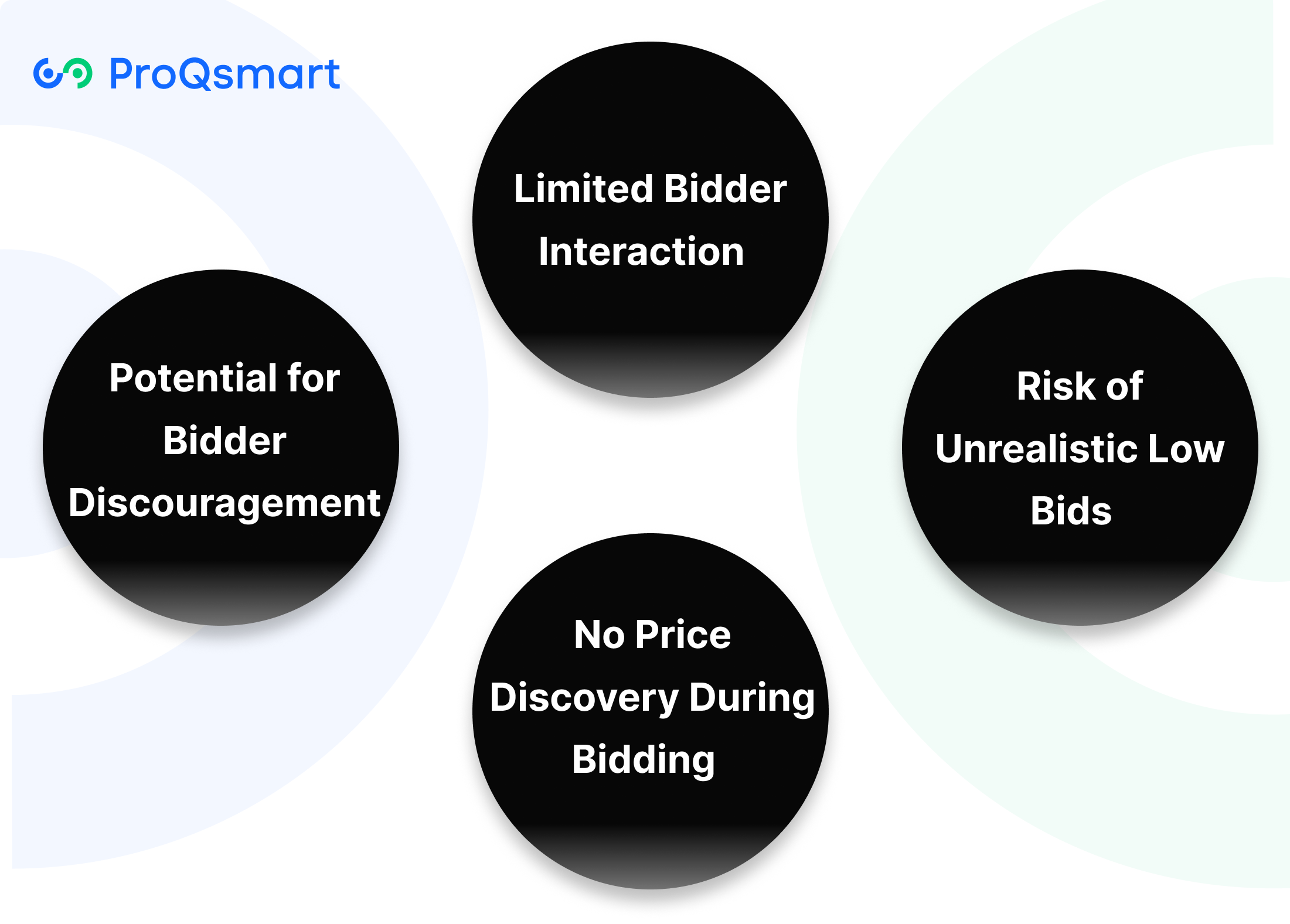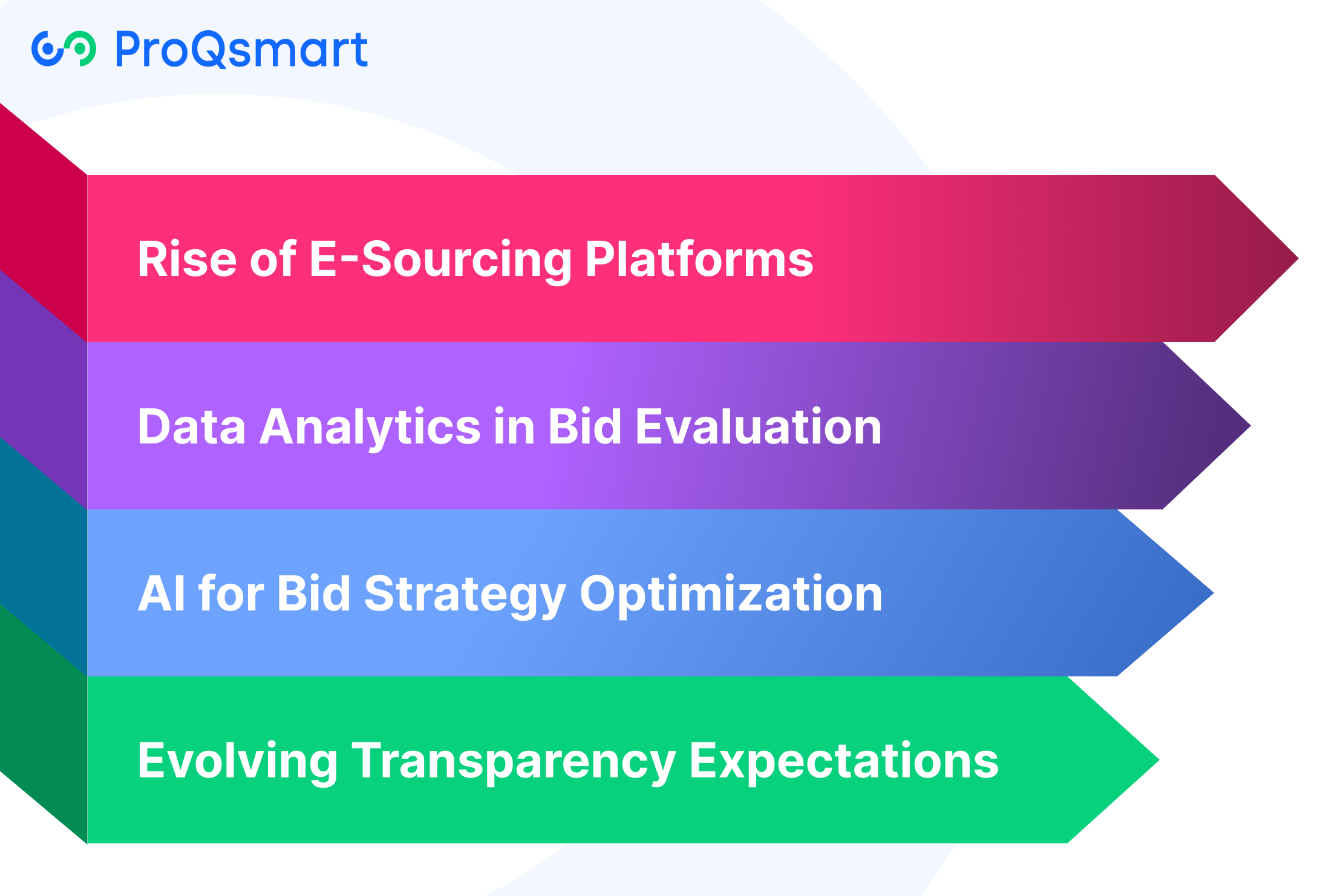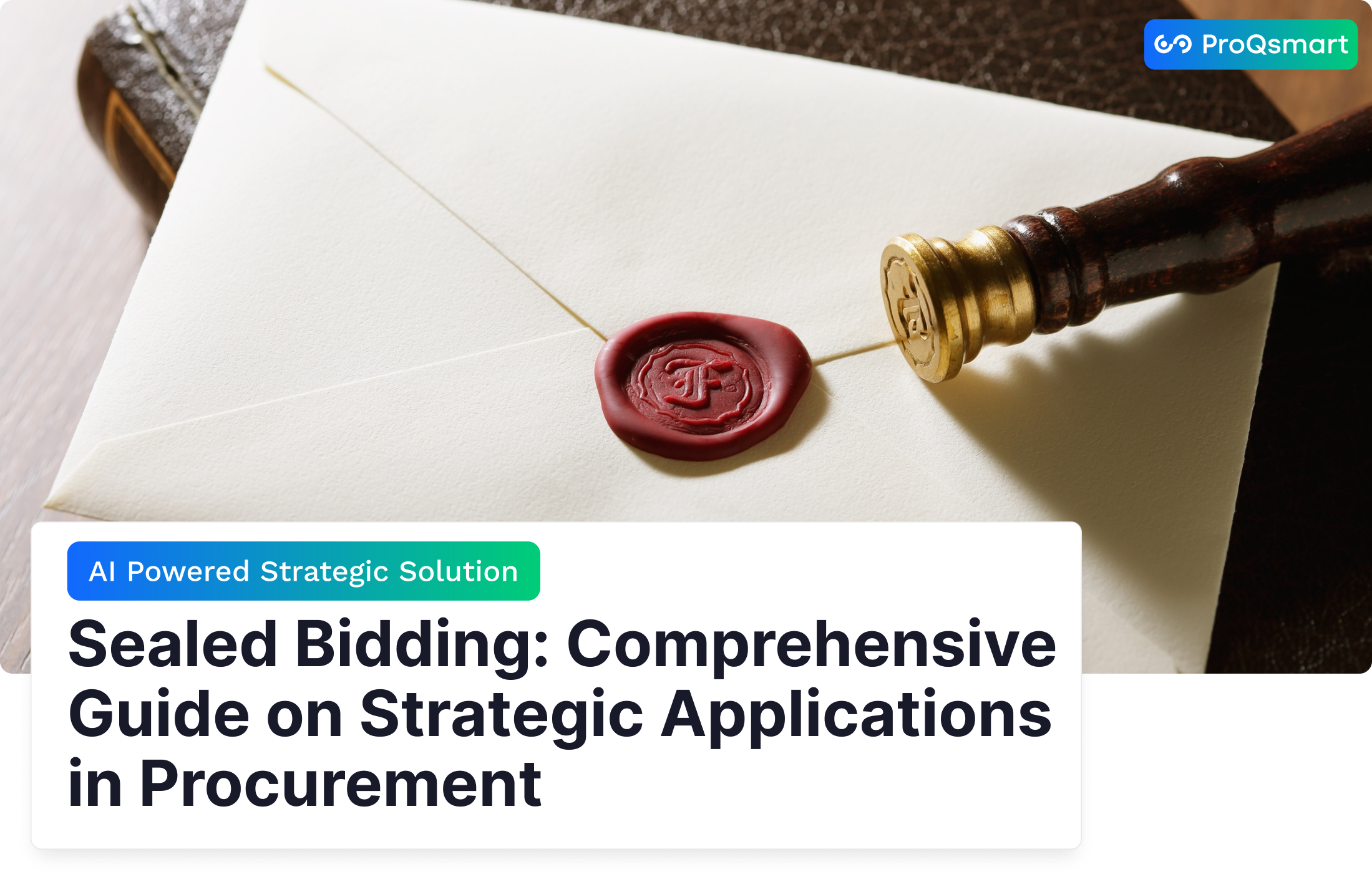A sealed bid lets you submit a price quotation for a service or commodity. Each bidder submits their bid price in a sealed envelope, or sometimes via an electronic form.
Buyers appreciate it because it helps level the playing field, reduce bias, and ensure they receive the best price without negotiation. Many builders, suppliers, and product groups are relying on sealed bids to lock in contracts for large projects or strategic products.
The following pages illustrate how it plays out in practice.
What is a Sealed Bid?
A sealed bid process provides a mechanism where all prospective bidders can keep their offers private from one another. Each bidder submits their proposal secretly, either in a sealed envelope or through a secure electronic bids platform. This ensures that no one knows the details of the other bidders’ submissions, maintaining confidentiality throughout the bidding time.
This sealed bidding approach is often utilized for larger contracts, especially when the price is substantial enough to necessitate certified cost or pricing data. The entity seeking goods or services—such as a government agency or large corporation—issues an invitation to potential bidders, encouraging them to participate in the bidding process.
Each bidder receives the same invitation to bid, typically on a Standard Form like SF 33, allowing all potential participants at least 30 days to prepare their respective bid packages. To ensure fairness, we conduct a public opening of all sealed bids simultaneously, giving everyone an equal opportunity to compete for the contract.
Core Principles: Confidentiality and Fairness
Confidentiality plays an important role in sealed bidding. Offers remain concealed until the formal opening, which preserves the integrity of the competitive bidding process. This arrangement allows the decision-makers to consider bids free from outside intimidation or coercion.
Fairness is achieved by ensuring that all participants have the same information and understand that their bid will be evaluated solely on its own merits. When the process is transparent and the rules are known ahead of time, it’s usually the buyers who receive the greatest value for their dollars.
The regulations feature extensive price reduction clauses and set complete costs for tolerating a contract. These features create the transparency needed to enhance public confidence in the entire bidding process.
Sealed Bids vs. Open Auctions
Sealed bidding differs from open auctions. In an open auction, the dynamic is very different. Everyone can see every bid placed and immediately respond, creating pressure that escalates the price.
In the case of sealed bidding, each offeror submits a bid without disclosing other offers. This would stop collusion or bidder ring formation amongst bidders or price manipulation. Sealed bids only make sense when the job is large, the specifications well-defined, and ensuring low-bidder fairness is the primary goal.
Open, ascending price auctions maximize returns to the seller and are suited for sellers looking to maximize revenue. Second, they are great if the overriding purpose is to create competition.
The Sealed Bidding Process Explained

1. Issuing the Invitation to Bid
Invitations for sealed bids should be explicit, comprehensive, and precise. The contracting team must include all requirements, technical specs, and legal conditions. Publicizing these invitations through official channels, like a state’s official procurement platform, ensures a broader reach of qualified bidders which is important for fostering competition.
Timing is important — at least 30 days is required for bidding when a public notice synopsis is required. This provides bidders the opportunity to review RFP documents, clarify key terms, and prepare competitive, responsive submissions.
2. Preparing Your Bid Submission
A good bid package will have full pricing, technical information, and any bid sample(s) as needed, which is referenced in 52.214-20. Teams follow every instruction in the solicitation, using the right forms and ensuring compliance with pricing and technical proposal clauses like 52.214-24.
Incomplete or vague information could easily lead to disqualification, which is why precision and clear presentation of written documentation is important.
3. Submitting Bids Securely
Bids are hand delivered in standard sealed envelopes, with very strict procedures governing where and when those sealed envelopes must be delivered. Packaging needs to be tamper proof and maintain the confidentiality of the bid.
The vast majority of bidders are timely, with missing a deadline almost always resulting in exclusion.
4. Evaluating Bids Against Criteria
Contracting officers select the winning bid based on objective criteria, price, compliance, technical merit, and administrative costs (currently estimated at $500 per contract). Independent evaluation committees review every bid, meeting strict federal standards for fairness.
This stepwise approach ensures that the process remains fair, transparent, and subject to public scrutiny.
5. Awarding the Contract
Contracts are awarded to the lowest price, first compliant bidder. The decision ultimately is made according to that evaluation, with explicit communication of results to all bidders.
Award clauses, as provided in 52.214-28, protect the integrity of rules regarding submission of pricing data when thresholds are reached.
Why Organizations Choose Sealed Bids
Design organizations to choose sealed bids lie when they seek competition and level playing field and clear requirements. This approach creates an undeniable groundwork for faith-based funding protocols built on trust and informed decisions with competitive procurement.
They like sealed bids because they prevent price gouging and ensure that each bidder has a fair and equal opportunity to bid.
Encouraging Genuine Competition
Sealed bids ensure all bidders start on an equal playing field. Since no one knows what everyone else is offering, each firm needs to submit their most competitive price and proposal.
This greatly helps the integrity of the process and ensures that no single bidder is able to get an unfair advantage. Because of the use of confidentiality, bidders cannot low-ball or overcharge to discourage competition.
When cities are purchasing new transit buses, every manufacturer submits one sealed, secret bid. Without anyone knowing competitors’ prices until after the time to change has passed, every single bid is the result of true market conditions.
This fair competition allows organizations to receive greater value for their money and receive innovative solutions.
Preventing Collusion Among Bidders
Sealed bids prevent bidders from colluding or bid rigging. Bidders remain unidentified until the opening, which eliminates backroom agreements.
Fair competition flourishes under this arrangement. Logically, organizations perceive a somewhat diminished danger of collusion, such as when construction contractors bid on interstate highways.
Because each bid remains sealed until the official bid opening, all organizations play by the same rules and integrity and honest competition remain intact.
Achieving Optimal Pricing Potential
Sealed bids incentivize firms to provide their lowest possible bid. This confidentiality helps keep pricing competitive and aggressive.
Finally, market research helps companies select prices that are feasible. Accounting for errors—say, a decimal point misplaced or an incorrect discount entered—ensures bids remain competitive.
Ensuring Process Transparency (Post-Opening)
Beyond the bid opening, the process remains transparent. The results are published so that anyone can observe whether or not bids are being evaluated fairly.
This frequently open approach inspires confidence and holds each party accountable to one another.
Suitability for Defined Requirements
Sealed bids work best when their needs are well-defined and easily quantifiable. They work best for relatively easy-to-understand, commonly known widgets that are already commercially available, like office chairs or school supplies.
Advance notice with clear specifications and a defined bidding period, minimum of 30 days, allow bidders to study, prepare and bid competitively. Optional additional forms and checks prevent confusion with awards.
Potential Drawbacks and Considerations

Sealed bidding ensures that each prospective bidder has an equal opportunity while providing robust limitations that teams must understand before opting for this procurement method. Recognizing these potential drawbacks enables those involved in custom manufacturing or construction to make informed decisions that align with their objectives and project requirements.
Limited Bidder Interaction
With sealed bids, all teams send in their price and plan without talking to the buyer or seeing what others are doing. This “rip and read” arrangement leaves bidders no room to request additional information or clarify questions during the bidding process.
If the scope is not clear, a manufacturer may inaccurately assume certain specifications. This has the potential to create a huge gap between what’s really needed and what they’re actually providing. Follow-up questions that help teams clarify the details are frequently neglected. This can lead to lack of clarity and a failure to identify opportunities.
Risk of Unrealistic Low Bids
Bidders often underbid by large margins, looking to drive the others out and win it based on price. This of course can have the opposite effect, resulting in sub par work or overdue deliverables.
Take for example a fabricator who underbids on a project, only to learn later that the actual cost is significantly greater. Proper checks and reviews should identify problematic bids that just don’t look right. With an all-or-nothing, sealed single-shot market, teams cannot re-bid if they misjudge their competition.
No Price Discovery During Bidding
Sealed bids are typically non-negotiable, with no opportunity to haggle or match a competing offer. Bidders don’t know what else is out there, possibly leading them to bid below the actual market rate.
The difference between the lowest bid and the second-lowest bid could be just a few percentage points. Yet no one will know the final amounts until the very last minute. This makes the process easy to administer, but it doesn’t drive prices as low as an open English auction format might.
Potential for Bidder Discouragement
Many teams avoid sealed bids as an option because it is too opaque or too cumbersome. The lengthy US-style protest period after awards can further extend timelines and increase expenses.
Public discussions or demonstrable clear and explicit feedback allow other teams to get in the mix, making the process more equitable and open to all.
Sealed Bidding Across Industries
Private industries, like gaming, employ sealed bidding to establish a level playing field and maintain integrity in transactions. Cost-based competition in public works, government offices, and large corporations ensures an honest appraisal of project costs and prevents favoritism. Recently, other coalitions have brought sealed bids online, creating a more streamlined and user-friendly experience.
The “rip and read” practice originated with staff receiving paper folders containing bids to open and read on the spot. Now, it’s turned into a process that leverages secure digital tools. The system is so widely admired that roughly 80 percent of government contracts are awarded through sealed bidding.
Construction Projects
In construction, sealed bids determine how municipalities and states choose contractors to build our interstates, bridges, and major infrastructure. Sealed bids ensure that owners receive the best value for these big jobs where the budget is king. Each bid remains confidential until a predetermined time, ensuring all companies have an equal opportunity to compete.
Bids that adhere to established specifications and guidelines rise to the top, which ensures the process is transparent and adheres to state statutes and codes. When contracts are subsequently awarded, forms such as SF 33 or SF 26 are signed, at which point the contracts are executed. Typical errors, like a decimal in the wrong place or incorrect discount, are usually stopped both in the review process.
Just as a contractor cannot submit one type of bid and then switch it after bids are received, so should the implementing agency.
Manufacturing Projects
Sealed bidding ensures control, clear rules, and competitive pricing to custom manufacturing. The process begins with developing bid specifications, advertising requests, receiving sealed proposals, and then opening them all at the same time. Each firm’s proposal remains confidential until the bidding day itself.
Suppliers Complete Submission Review teams examine the bids for cost, specifications and previous work before choosing a supplier. Implementation challenges do arise, such as deciphering poorly written bids or encouraging competitive bids from quality providers.
Now, we know that sealed bids keep teams on budget and maintain transparency for everyone.
Develop Effective Bidding Strategies
In sealed bidding, the winning strategy is often the one that gets the best teams under contract while meeting budget, compliance, and quality goals. Today’s digital shift, seen across public entities, means prospective bidders have more tools, such as electronic bids, but must show strong planning and sharp execution. They must also consider urgency, complexity, and bidder location before submitting an initial offer.
Analyze Bid Requirements Carefully
Teams that critically analyze each and every bid spec and rule identify what procurers seek. Reviewing every aspect of the solicitation ensures nothing gets overlooked—from scope of work to timelines. That detailed work helps produce bids tailored specifically to what the buyer is looking for.
This step allows a team to prevent costly omissions and overruns, making them more competitive and likely to shine when the projects are read.
Assess Competition and Market Rates
A savvy team will look into who else is bidding and what the current rates are. They can provide guidance on competitors’ strengths and market averages. This tactic enables them to find the optimal price point that’s low enough to lure customers away from competitors, but high enough to maintain profitability.
This approach is critical for highly custom manufacturing, where a move in the market can make the winning price different from one week to the next.
Price Your Bid Strategically
The winning bids strike the right balance between competitive pricing and value to the taxpayer. Teams consider how much it would cost to deliver, then factor in additional requisites such as technology improvements or expedited schedules.
With well-formed data, they’re able to illustrate to buyers why their offered price is justified. Utilizing ProQsmart’s AI tools, teams can monitor costs, conduct “what-if” price checks, and maintain a clear demonstration of value.
Emphasize Non-Price Factors
What makes teams unique is their ability to demonstrate skill, quality, and service. Specifics, such as on-time delivery statistics or sustainable sourcing, develop credibility and trust.
By enhancing these considerations, other than price, it provides buyers with additional justification to select the bid.
Submit a Compliant, Clear Bid
The best bids are those that are organized, written clearly and completely, and meet each and every requirement. Organizationally, they involve all required documentation, conform to the outlined scope of work, and provide the necessary evidence for reimbursement requests.
Teams can ensure compliance, reduce errors, and accelerate approvals with platforms like ProQsmart.
|
Strategy |
Key Features |
Pros |
Cons |
Best Use |
|
Traditional |
Manual review, static pricing |
Simple, proven |
Slow, less flexible |
Small, low-risk bids |
|
Advanced (AI/Data) |
Analytics, real-time updates |
Fast, data-driven |
Needs training |
Complex, high-value bids |
Technology and Future Trends

Today, sealed bidding is unrecognizable compared to just a few years ago. The vast majority of new public sector projects have transitioned from printed paper to electronic bids, which maintain integrity, speed, and transparency. Prospective bidders are finding tangible benefits with these new systems, including reduced documentation, easier monitoring, and improved accuracy in bid packages.
Rise of E-Sourcing Platforms
E-sourcing platforms such as ProQsmart are at the forefront of this change. These platforms allow teams to configure blind bids electronically, with bids remaining sealed up until the bid deadline. Only bid admins can view them and only after the closing time has elapsed.
Digital workflows improve efficiency, reduce manual error and provide a robust audit trail. Platforms such as ProQsmart take things a step further with AI that tracks project budgets, automates routine work, and assists teams in managing suppliers and subcontractors. With most of these tools—many of them even freeware—daily procurement becomes easy and keeps teams on budget.
Data Analytics in Bid Evaluation
Data analytics are dramatically altering how teams evaluate bids. Today, their teams can identify trends, price variations, and supplier performance with real data. That translates to safer, smarter decisions and more equitable results.
For example, when the lowest and second-lowest bids differ by just a few percent, analytics help teams choose the best option with confidence. Tools that trace and transparently display each step along the way foster trust in the process.
AI for Bid Strategy Optimization
AI tools in platforms such as ProQsmart guide teams to understand emerging market trends and identify potential competitor moves. This allows companies to strategize intelligent bids and not risk losing a bid by underbidding or overpaying for work.
AI allows teams to get real-time insights into spending and supplier performance, enabling them to adjust their strategy in agile ways.
Evolving Transparency Expectations
Specifically, expectations for clearer, more open and competitive bidding continue to increase. With digital tools, each stage is recorded, ensuring teams can comply with emerging regulations focused on equity and transparency.
Platforms such as ProQsmart have functionality to ensure bids are equitable, protected, and easily auditable.
Conclusion
Sealed bids level the playing field for buyers and sellers. Each bid arrives in under complete secrecy, with no opportunity to look, so teams rely on their expertise and information. The process provides clear rules, less room for favoritism and a good chance at better prices. Each deal stands as a testament to the power of an intelligent plan and an entrepreneurial mindset. From building to tech, sealed bids allow teams to win more work and keep costs down. Digital tools make it easier to submit bids and monitor every step. Teams that are able to adapt to these shifts remain leaders.
To truly maximize the value of sealed bids, teams will need to continue to iterate and experiment on what is most effective. Want to learn more about the program and the next steps? Check out ProQsmart and schedule a demo with us today!




